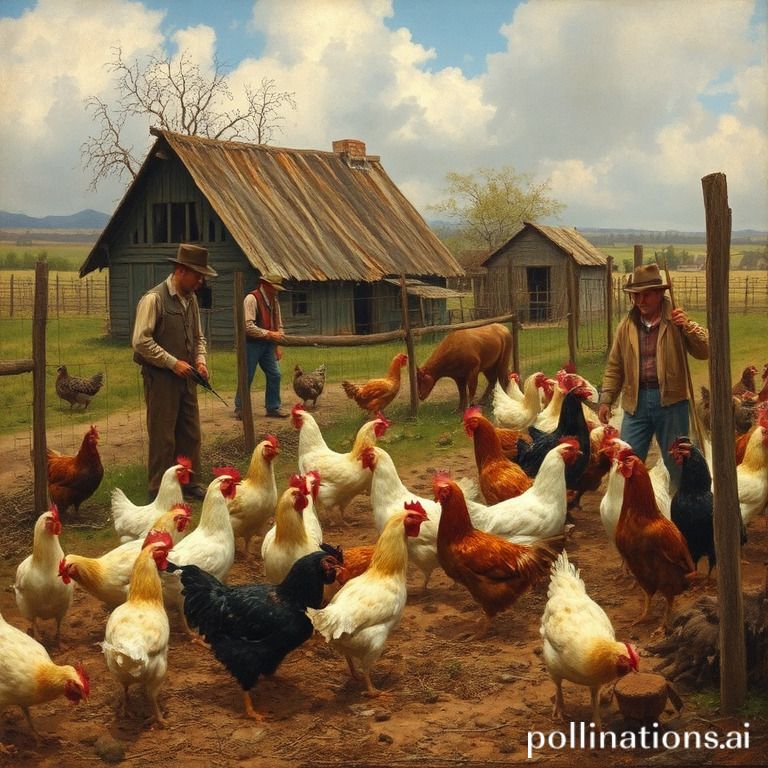How do you keep coyotes away from your chickens? With their sharp teeth and cunning nature, coyotes can pose a serious threat to your feathered friends. But fear not, there are proven methods to protect your flock and keep those coyotes at bay.
From sturdy fencing to motion-activated lights, there are multiple techniques you can employ to ensure the safety of your chickens. By implementing these preventive measures, you’ll be able to sleep soundly knowing that your poultry is well-protected from any potential harm. So, let’s dive into the world of coyote deterrents and discover how to keep your chickens safe from these wily predators.
Eaton Pet and Pasture, Premium Laying Hen Nesting Pads
Comfort and Quality for Your Hens
Coyote Behavior and Habits
Studying coyote behavior and habits is crucial for effectively managing and mitigating any potential risks they pose. By Grasping their hunting patterns and tendencies, you can develop strategies to protect your livestock and property.
1. Coyote Behavior: Hunting Patterns and Tendencies
Coyotes are adaptable and intelligent predators. They exhibit various hunting patterns and tendencies that can help you anticipate their behavior:
- Nocturnal Behavior: Coyotes are mostly active at night. Grasping their nocturnal habits can help you take appropriate precautions.
- Social Structure: Coyotes live and hunt in family groups called packs. Grasping their social hierarchy and dynamics can give you insights into their hunting strategies.
- Scavenging Behavior: Coyotes are opportunistic scavengers and will readily consume carrion and garbage. This behavior can influence their hunting patterns as they may be drawn to areas with easily accessible food sources.
- Patrolling Behavior: Coyotes regularly patrol their territories. Identifying their patrol routes and marking points can give you insights into their movement patterns and potential areas of concern.
2. Identifying Signs of Coyote Presence
Recognizing indicators of coyote activity is essential for determining their presence and assessing potential risks. Look out for the following signs:
- Tracks: Coyote tracks resemble those of a dog but are typically narrower and more elongated. Identifying fresh tracks can indicate recent coyote activity in the area.
- Scat: Coyote scat is often tubular and may contain hair, bones, or other undigested materials. Examining their droppings can provide insights into their diet and presence.
- Howling and Vocalizations: Coyotes communicate through howling, yipping, and various vocalizations. Listening for their distinctive calls can help identify their presence and potential proximity.
- Damaged or Missing Animals: If you notice a sudden increase in missing or injured livestock, it could be an indication of coyote predation. Assess the evidence and consult with local authorities or wildlife experts for confirmation.

Physical Obstacles and Discouragements
Ensuring the safety and well-being of your chickens requires protecting them from coyote attacks. By utilizing various physical obstacles and discouragements, you can effectively keep coyotes away from your chicken coop and prevent any potential harm to your poultry.
1. Secure chicken coop design
A coyote-proof chicken coop serves as the initial defense against these predators. Designing a secure coop involves:
- Using strong and durable materials, such as heavy-gauge wire mesh, to prevent coyotes from gaining access
- Ensuring the coop has a sturdy frame that can withstand coyote attempts to break in
- Installing a secure latching system on doors and windows to keep them tightly closed
2. Installing sturdy fencing
A reliable barrier around your chicken coop is crucial in deterring coyotes. Consider the following when installing fencing:
- Use fencing materials that are resistant to coyotes, such as chain-link or welded wire mesh
- Bury the bottom of the fence at least 12 inches underground to prevent coyotes from digging underneath
- Ensure the fence is tall enough (at least 6 feet) to discourage coyotes from jumping over
3. Using motion-activated lights and sound devices
Coyotes are often discouraged by unexpected stimuli. Utilize motion-activated lights and sound devices to deter their presence:
- Install motion-activated lights around the perimeter of your chicken coop to startle and scare off coyotes
- Place sound devices, such as ultrasonic discouragements or radios, near the coop to create a sense of disturbance for coyotes
Implementing these physical obstacles and discouragements will significantly enhance the security of your chicken coop and diminish the risk of coyote attacks. By taking proactive measures, you can ensure the safety of your chickens and have peace of mind.
| Benefits of Physical Obstacles and Discouragements |
|---|
| 1. Protection: Safeguard your chickens from coyote attacks and potential harm |
| 2. Peace of mind: Diminish the risk of coyote intrusion and have a sense of security |
| 3. Long-term solution: Implement measures that provide ongoing protection for your chickens |
Non-lethal methods to deter and repel coyotes
It is crucial for poultry owners to protect their chickens from coyote attacks. By using non-lethal methods to deter and repel coyotes, you can effectively keep them away from your chicken coops and ensure the safety of your poultry. Here are some effective techniques:
1. Coyote urine and predator scent
Using natural deterrents to discourage coyotes
One effective method is to use coyote urine or predator scent around the chicken coop. The smell of a potential predator can deter coyotes from approaching the area. Applying this scent around the perimeter of the coop can create a barrier that keeps coyotes away.
2. Scare tactics
Using scarecrows and visual deterrents
Scare tactics can be an effective way to deter coyotes. Installing scarecrows or other visual deterrents, such as reflective tape or hanging shiny objects, can create a sense of danger and prevent coyotes from approaching the chicken coop. These visual stimuli disrupt their normal behavior and discourage them from coming near.
3. Electronic deterrents
Using ultrasonic devices to repel coyotes
Electronic deterrents, like ultrasonic devices, emit high-frequency sounds that are unpleasant to coyotes. These devices can be placed near the chicken coop or in the surrounding area to create a sonic barrier that repels coyotes. The ultrasonic sounds are inaudible to humans but highly disruptive to coyotes, making them an effective deterrent.

Behavioral Modifications for Chickens
Chickens are susceptible to various predators, including coyotes. Implementing behavioral modifications can help safeguard your chickens from potential harm. Below are effective methods and techniques to keep your chickens safe from coyotes:
Nighttime Confinement
It is crucial to lock up your chickens safely during the night to protect them. Coyotes are more active at night, so confining your chickens to a secure coop or enclosure can prevent them from becoming easy targets. Ensure that the coop has strong walls, a secure roof, and predator-proof latches to ensure the safety of your feathered friends.
Providing Hiding Spots and Cover
Creating safe spaces for chickens to retreat can help them avoid coyote attacks. Provide hiding spots within their enclosure, such as dense shrubs or bushes, where chickens can seek shelter if they sense danger. Coyotes are less likely to pursue chickens that have quick access to hiding places, reducing the risk of predation.
Supervised Free-Range Time
Allowing chickens to roam under supervision during safer hours can provide them with enrichment and exercise In the course of minimizing the risk of coyote encounters. Make sure you are present to keep an eye on your chickens In the course of they explore their surroundings. This way, you can intervene if a coyote or any other predator approaches, effectively protecting your flock.
Protecting Your Chickens from Coyote Attacks: An Informational Table
| Method | Description |
|---|---|
| Nighttime Confinement | Safely lock chickens in a predator-proof coop during the night |
| Providing Hiding Spots and Cover | Create dense shrubs or bushes for chickens to seek shelter |
| Supervised Free-Range Time | Allow chickens to roam under supervision during safer hours |
Community Efforts and Cooperation
Ensuring the safety of chickens from coyote attacks requires a collective effort within the community. By communicating with neighbors and working together, a coyote-free community can be established where everyone’s chickens are protected.
1. Building Communication with Neighbors
Creating a strong network with your neighbors is essential in deterring coyotes from targeting your chickens. By keeping each other informed about coyote sightings and attacks, you can collaborate to implement preventive measures. Establishing a communication channel, such as a neighborhood group chat or email list, allows for quick information sharing and coordinated efforts.
2. Collaboration for a Coyote-Free Community
Sharing knowledge and strategies with other chicken owners is a valuable resource in keeping coyotes away. Learn from the experiences and success stories of others to develop effective techniques for protecting your chicken coops.
a. Sharing Information
Organize community meetings or online forums where chicken owners can exchange information on preventing coyote attacks. Discuss topics such as secure coop designs, fencing options, and predator deterrents. Encourage participants to share their insights and any innovative ideas they have discovered.
b. Learning from Others’ Experiences
Hearing about successful methods used by other chicken owners can inspire new approaches to protect your chickens. Gather stories from those who have effectively kept coyotes at bay. These anecdotal accounts can provide valuable insights and motivate you to adapt their strategies to suit your own circumstances.
Conclusion
Implementing key strategies is crucial for keeping coyotes away from chickens. By securing the coop with sturdy fencing and using motion-activated lights or sound devices, you can deter these predators effectively.
Regular maintenance is essential to ensure ongoing protection for your flock. Regularly inspecting and repairing any potential weak points in the coop’s structure, as well as reinforcing the perimeter, will help to maintain a safe environment for your chickens. Remember, by prioritizing these measures, you can successfully safeguard your chickens against coyote attacks and promote their well-being.
Faq about Coyotes and Chickens
FAQ 1: How effective are motion-activated lights in deterring coyotes?
Motion-activated lights can be an effective deterrent for coyotes. These lights are triggered by movement, which can startle and scare away coyotes. By installing motion-activated lights around your chicken coop or yard, you can help keep coyotes at bay.FAQ 2: Can coyote repellents harm my chickens?
Most coyote repellents are designed to deter coyotes without harming other animals, including chickens. Nevertheless, it’s important to carefully read and follow the instructions provided by the manufacturer. Some repellents may contain ingredients that could be harmful to chickens or other livestock, so it’s crucial to choose and use repellents specifically labeled for use around chickens.FAQ 3: What should I do if I spot a coyote near my chicken coop?
If you spot a coyote near your chicken coop, it’s important to take immediate action to protect your chickens. Try to scare the coyote away by shouting, clapping your hands, or making loud noises. Remove any potential food sources and secure your chicken coop with sturdy fencing. Consider installing motion-activated lights or employing other deterrents to keep coyotes away.FAQ 4: Is it legal to trap or kill coyotes to protect my chickens?
Laws regarding trapping or killing coyotes vary by location, so it’s essential to check local regulations and consult with wildlife authorities or animal control agencies. In some areas, permits or licenses may be required to legally trap or kill coyotes. It’s important to explore non-lethal methods of coyote control first and resort to lethal measures only when necessary and allowed by law.FAQ 5: Will having a dog in my yard help keep coyotes away from my chickens?
Having a dog in your yard can help deter coyotes from approaching your chickens. The presence of a larger, territorial animal like a dog can discourage coyotes from coming near your property. Nevertheless, it’s important to supervise your dog and ensure it is safe from potential harm by coyotes. Additionally, training and socializing your dog to be protective of your chickens can further enhance its effectiveness as a deterrent.Read Similar Post:
1. How Long Do Bantam Chickens Live?
2. How To Stop A Dog From Killing Chickens?

